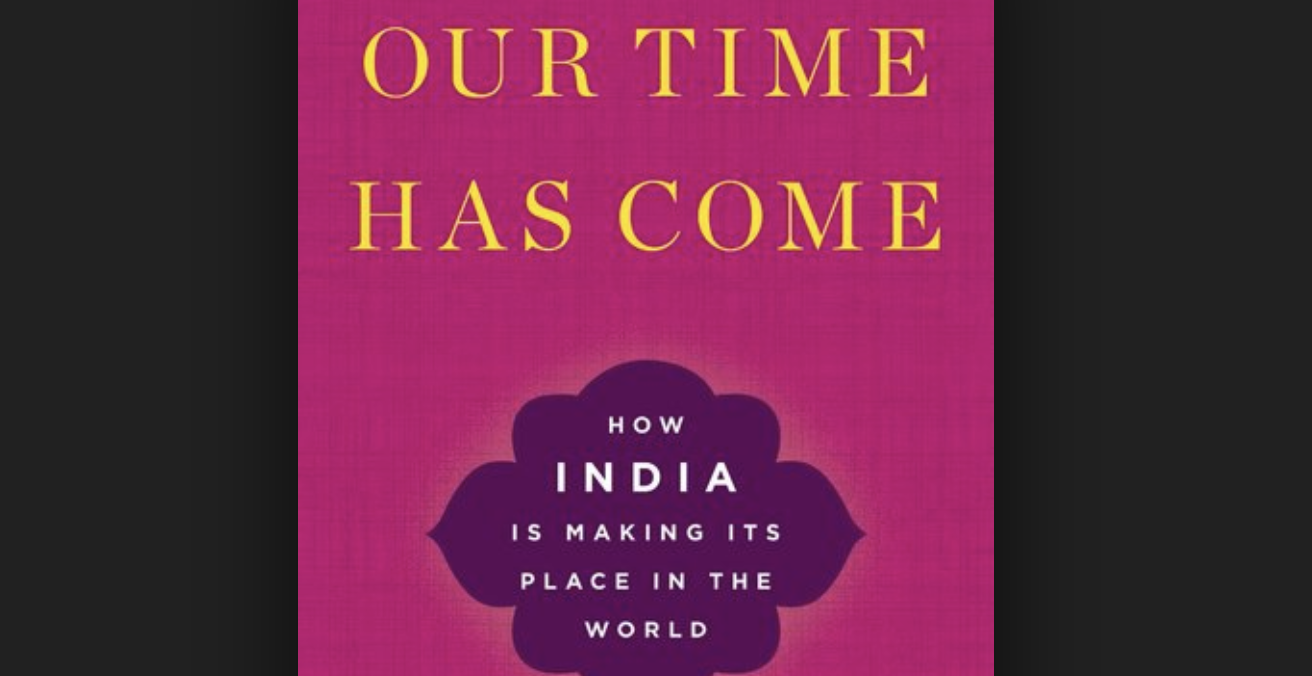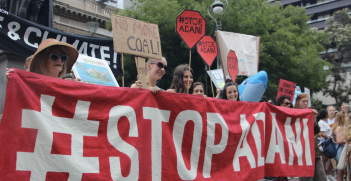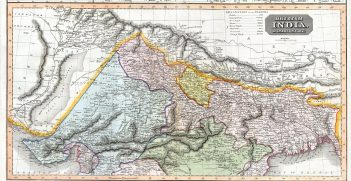Reading Room: Our Time Has Come

Alyssa Ayres’ Our Time Has Come: How India is Making its Place in the World is an ambitious, evidence-packed and tightly argued celebration of India’s economic and political rise. Ayres clearly has great affection for India and her book is aimed at making US policymakers give India credit for its considerable achievements.
This is an ambitious book. Even for someone as qualified as Alyssa Ayres – a South Asia specialist at the Council on Foreign Relations; a former Deputy Assistant Secretary for South Asia in the Obama administration; a scholar and published author with 25 years of experience in India and South Asia – writing about a country as complex as India, and on a topic as consequential as India’s rise, seems a formidable task.
The title of the book derives from two separate quotes from two Indian prime ministers: Manmohan Singh and Narendra Modi. Normally politically opposed, they share the assumption that a rising India deserves a place in all major global councils. Ayres endorses their belief, explaining how India has changed from an “emerging power” to a “leading power” and is now laying an explicit, confident claim to be “one among the major global powers.”
Ayres uses hard power indicators to make her argument: the world’s third-largest military, the sixth-largest defence budget, the seventh-largest economy (tipped to be third in 2029) and a burgeoning middle class with a working-age population supporting relatively few retired people.
Yet India isn’t a member of the United Nations Security Council, nor the G-7, nor the Asia-Pacific Economic Cooperation and others listed in the text. Much to its chagrin, India has been kept on the margins of the global institutions central to US diplomacy, with its impressive economic power and defence capabilities remaining relatively unnoticed. Ayres believes this must change. In a nutshell, she urges the United States to embrace India’s rise and make a greater investment in reducing “the knowledge gap” about India (particularly in comparison with China and Europe) and in educating the American public who remain, according to Ayres, “sadly in the dark.”
The book is divided into three sections: Indian foreign policy until the 1990s; the transition over the following two decades; and finally, India’s global ambitions, which includes a chapter of advice for “how the United States should work with a rising India.”
Ayres traces the trajectory of India’s new confidence back to the economic liberalisation reforms of 1991. Indeed, it is India’s economic growth which Ayres sees as central to India’s rise. It is, she says, “the foundation for building national capabilities.” Extensive economic data and analysis underpin the text.
One of the central arguments is the idea that India must be understood on its own terms. Its unique history and the factors that have shaped its development must be taken into account.
Ayres deftly explains the trajectory of the path leading to today’s policy independence from the decision by India’s first Prime Minister Jawaharlal Nehru’s to choose non-alignment as its foreign policy philosophy. She spends some time tracing Indian foreign policy back to traditional Indian thinking, its ancient texts and then links these to its contemporary direction.
It is here that Ayres’ earlier work as a cultural historian shines through.
Ayres writes enthusiastically about the George W Bush administration’s 2005 US-India civil nuclear agreement which changed the rules of engagement. It was a ground-breaking deal, she claims, which de-hyphenated India from Pakistan and helped the relationship move on from the “legacy issue [of] earlier nuclear non-proliferation concerns.”
In 2016, the Obama administration reconceptualised India as a “major defence partner.” No other country has been accorded this status and, bilaterally, she believes, it marked a big step forward. But Ayres emphasises that India’s greater global engagement will not compromise its policy independence. It will never sign up to the commitments of a formal US alliance, nor play the role of a supporting power facilitating American strategic objectives.
Ayres’ discussions of India in Asia – its relations with China, its quest for primacy in the Indian Ocean, its developing ties with Japan and the various regional organisations where it is engaged – are scattered, somewhat disjointedly for this reader, in subsections throughout the book. Making the point that India’s overall policy goal is “to be one among many in a multipolar world,” Ayres acknowledges that the shift to becoming a major maritime power, the preeminent power in the Indian Ocean, is “underway right now.”
Relations with China remain “rocky,” bedevilled by a number of China-India border issues; China’s port development-support in Bangladesh, Sri Lanka and Pakistan; and China’s protection of Pakistan in the UN Security Council. But Ayres believes the economic ties will act as a “positive offset for these unresolved security problems.” India has a lot to lose if relations with Beijing fracture, she explains. Hence, India “takes care to weigh its options.” Indeed, the chapter on India’s “stylistic preference for caution” is one of the most interesting.
Ayres is an optimist about India, a country for which she clearly has deep affection. Although she acknowledges its many domestic challenges – poverty, insufficient infrastructure and social cleavages – Ayres argues they do not constrain India from a larger global role. Some readers may think the book pays too little attention to this point: for example, the currently intractable problems that a vast urbanising population, with deep communal and caste fault-lines, creates in the areas of air pollution, waste and public sanitation, are barely touched upon.
But Ayres believes it is possible to rise on the world stage while “battling domestic vulnerabilities at the same time.” Only time will tell if she is right.
The book is primarily aimed at an American audience and written from an American foreign policy perspective. Australian foreign policy observers will search in vain for anything substantive about India and Australia. Ayres interviewed and consulted many experts, but there are surprisingly few contributions by the Australian academics and strategic analysts who are widely published on India and the Indian Ocean.
This well-researched, evidence-packed and tightly argued book is largely a plea for American policymakers to move beyond India’s past shortcomings, focus on the big picture and give India credit for its considerable achievements.
Ayres seeks to celebrate India’s economic rise, describes its successes, point to its strengths, and outline the possibilities it presents for the United States. She writes with elegance and insight.
Ambitious? Yes, and she demonstrably succeeds in what she set out to do.
Alyssa Ayres, “Our Time Has Come: How India is Making Its Place in the World,” (Oxford:
Oxford University Press, 2018)
Dr Meg Gurry is a fellow of the Australia India Institute in Melbourne. She is the author of Australia and India: Mapping the Journey 1944-2014.
This article is published under a Creative Commons License and may be republished with attribution.





